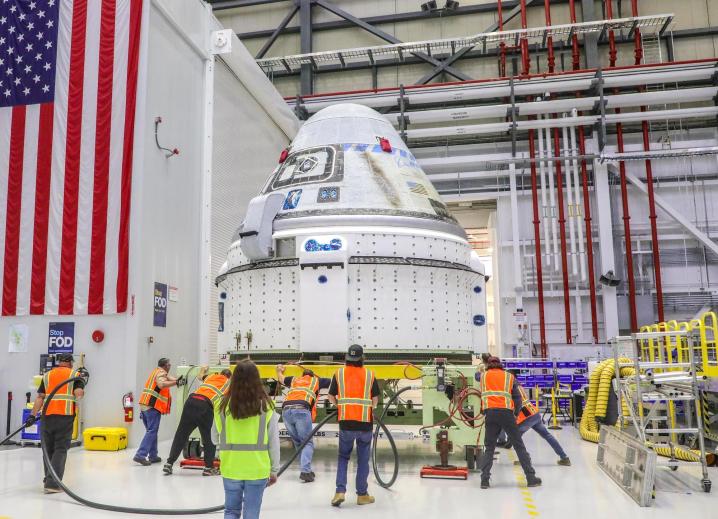
After numerous delays, NASA and Boeing look more certain than ever to launch the first crewed flight of the CST-100 Starliner spacecraft in May.
In a major step toward the long-awaited Crew Flight Test (CFT) mission, Boeing has started fueling the spacecraft.
The CFT mission will see NASA astronauts Butch Wilmore and Suni Williams climb aboard the Starliner atop a United Launch Alliance (ULA) Atlas V rocket for a historic flight to the International Space Station (ISS).
The Starliner spacecraft, which comprises a reusable crew and expendable service module, was recently transported to the Hazardous Processing Area at Boeing’s Commercial Crew and Cargo Processing Facility (C3PF) near the launch site at the Kennedy Space Center in Florida, the aerospace giant said in a message shared on Monday, adding that fueling the Starliner will take around two weeks.
The propellant loading operation is being carried out by a team of specially trained technicians, including engineers specialized in fluids, propellants, and electrics.
“Following fueling, final closeout activities will be performed for the spacecraft’s rollout from the factory to United Launch Alliance’s Vertical Integration Facility at Cape Canaveral Space Force Station,” Boeing said. “Closeout activities include removing propellant access panels, placing environmental covers over the spacecraft’s thrust nozzle outlets, performing thermal protection system work, checking the spacecraft’s final weight and center of gravity, and loading it onto the transport vehicle.”
It’s taken a long time to get this far, and NASA and Boeing will be keen to see the first crewed mission pass off without any issues.
The first Starliner flight, back in December 2019, failed to reach the ISS, and a subsequent investigation surfaced a slew of problems with the spacecraft and its systems. A second test flight in 2022 managed to dock with the ISS before returning home, but more issues had to be addressed following the mission.
Now it appears that Boeing is finally ready to put a crew inside the capsule and send it to the orbital outpost — and back again.
Getting the Starliner operational will give NASA another option for crewed flights to low-Earth orbit alongside SpaceX’s Crew Dragon spacecraft, which has been transporting astronauts to and from the ISS since 2020.
Editors' Recommendations
- NASA’s Crew-7 astronauts splash down safely off the coast of Florida
- NASA addresses the crack in the hatch of the Crew-8 spacecraft
- Starliner’s first crewed test flight a step closer after crucial upgrade
- NASA readies Starliner spacecraft for first crewed flight to ISS
- NASA delays first crewed Artemis missions to the moon



